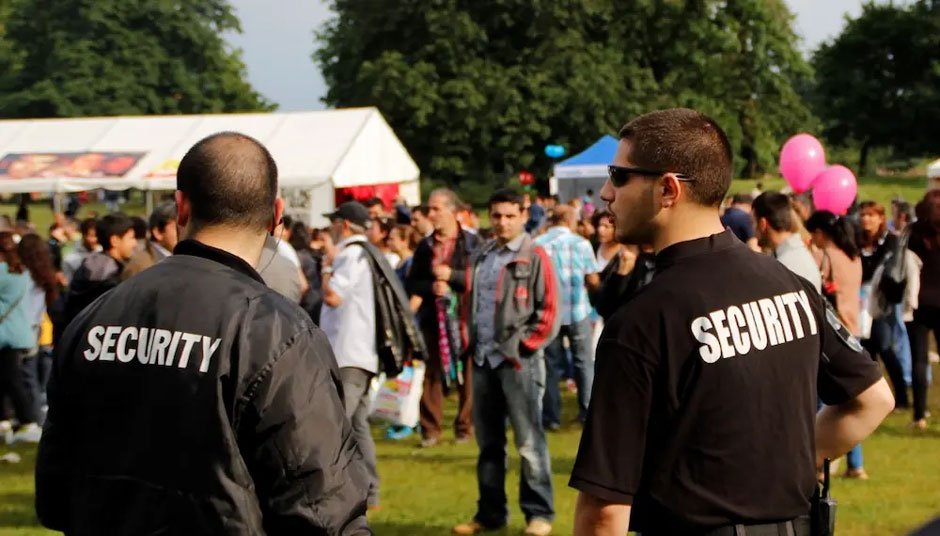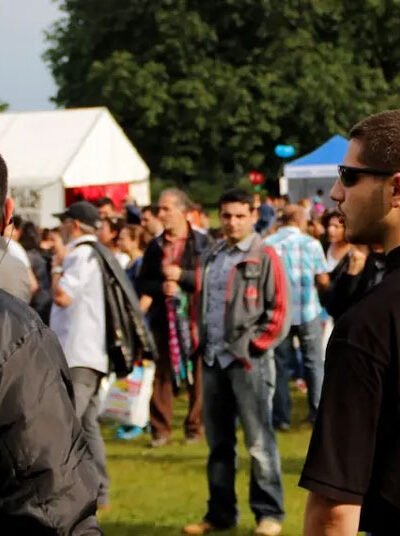 For people attending a large-scale event, the fun aspect of the experience is usually what they look forward to the most. Events such as concerts, festivals, and conventions bring a ton of excitement, offering attendees a chance to enjoy the atmosphere and create lasting memories. But for event organizers, entertainment isn’t what they typically prioritize. Security is often one of the first things on their minds, as they feel more at ease knowing that a well-prepared safety plan is in place to protect both guests and staff.
For people attending a large-scale event, the fun aspect of the experience is usually what they look forward to the most. Events such as concerts, festivals, and conventions bring a ton of excitement, offering attendees a chance to enjoy the atmosphere and create lasting memories. But for event organizers, entertainment isn’t what they typically prioritize. Security is often one of the first things on their minds, as they feel more at ease knowing that a well-prepared safety plan is in place to protect both guests and staff.
Ensuring the safety and security of eventgoers, however, calls for thoughtful planning. With many variables at play, event organizers need to devise a plan that addresses potential risks while maintaining a smooth and enjoyable experience for attendees. That’s why they employ a variety of measures designed to prevent incidents and enable them to respond swiftly if problems arise. Here are some of the things organizers do to keep large-scale events safe and secure.
Incorporate Multi-Layer Security Checkpoints
At large-scale events, a single checkpoint is rarely sufficient to manage the complexity of attendee screening. With thousands of people entering through multiple access points, it becomes difficult to thoroughly screen each person without causing delays or congestion.
To strike a balance between efficiency and vigilance, organizers often turn to a layered approach. Placing checkpoints—each with a distinct purpose—at key areas can ease the burden on any one screen location, strengthening overall security. For instance, an outer perimeter might be established to screen for prohibited items, while an inner perimeter could focus on verifying credentials or inspecting behavior more closely. With each checkpoint positioned and designed to reduce pressure on the next, it allows for a smoother flow of guests while ensuring that no step is bypassed.
For added coordination, staff stationed in these checkpoints can wear woven lanyards that display their role and level of authority. This way, both attendees and fellow staff members can easily identify who to approach for assistance, minimizing confusion during high-traffic moments.
Utilize State-of-the-Art Surveillance and Monitoring Tech
Technology plays a critical role in modern event security, offering tools that can detect issues faster and help teams respond more effectively. High-end surveillance systems, in particular, have become essential at large-scale events, not only for monitoring high-traffic areas in real time but also for recording footage that can be reviewed if an incident occurs. Cameras positioned at entrances, exits, and central gathering points give security teams a broader view of crowd behavior, which help supplement the physical presence of personnel.
Additionally, facial recognition software, drone monitoring, and radio frequency identification (RFID) systems are increasingly used to enhance situational awareness. These tools can track movement patterns, flag unusual activity, and even alert staff when certain zones exceed safe capacity limits. When used appropriately, and in compliance with privacy regulations, technology becomes an extension of the security team.
Hire Trained Security Personnel and Staff
While surveillance and monitoring tech are essential to extending the reach of event security protocols, human judgment is still a decisive factor in how effectively a situation is handled. Experienced, well-prepared personnel can interpret subtle cues and take immediate action when something feels off, allowing them to de-escalate tensions before they worsen.
That’s why event organizers hire trained security staff to serve as the frontline of response and observation. These professionals often bring backgrounds in law enforcement or specialized event security, sometimes even military service, which means they have the skills to calmly and efficiently respond to incidents should they arise.
Apart from dedicated security personnel, highly trained general staff also play a vital role in maintaining a safe environment. Ushers, ticket takers, and supervisors can support safety efforts from all angles, helping to create a more responsive and coordinated atmosphere as a result.
Collaborate with Local Authorities and Emergency Services
Strong coordination with local agencies is one of the most important—and yet often the most underestimated—aspects of event security. Local police, fire departments, and emergency medical services bring a level of experience and operational readiness to an event’s security, and their presence reassures eventgoers and staff that critical support is available when needed.
For this collaboration to be effective, event organizers should meet with relevant agencies well before the event takes place. Holding pre-event planning sessions and joint site walkthroughs allows both organizers and public agencies to align expectations and prepare for specific risks. During the event, having designated liaisons on-site from these agencies allows for faster response times and clearer decision-making. When local authorities are integrated into the planning and execution phases, the entire operation becomes more resilient and better equipped to handle complex situations.
Develop a Solid Emergency Response Plan
Even with thorough planning, events can still be disrupted by unanticipated challenges. For instance, medical emergencies, severe weather conditions, or potential security threats can unfold with little to no warning, putting both attendees and staff at risk. Therefore, organizers need to create a well-structured emergency response plan so that they have the ability to act quickly and decisively when a critical situation arises.
A solid emergency response plan outlines clear protocols for different types of incidents and identifies who is responsible for each step. It includes evacuation procedures, communication strategies, and coordination points for on-site teams. What’s more, it must be tailored to the specific layout, size, and nature of the event. This way, response efforts can stay practical and organized.
Large-scale events present unique security challenges that can’t be easily addressed with basic safeguards. Due to their dynamic environment, they demand a coordinated, multi-layer strategy to ensure the safety of everyone on site. Thus, event organizers utilize a range of proactive measures and responsive protocols to manage risks effectively. With the right systems in place, they can create a secure environment where attendees feel safe and can focus on enjoying the experience.





Leave a Reply